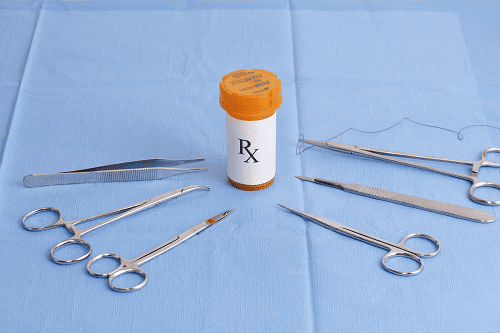 Researchers at Stanford University are studying a pre-surgical online program that is designed to help patients better manage pain and reduce the use of opioid painkillers after surgery.
Researchers at Stanford University are studying a pre-surgical online program that is designed to help patients better manage pain and reduce the use of opioid painkillers after surgery.
The program, called “My Surgical Success,” helps patients develop a personalized pain-management plan to control the anxiety associated with anticipating surgical pain. The program teaches patients to dampen the pain processing in their nervous system, so they have more control over how much pain is impacting them and how much medicine they need to manage their post-surgical pain.
“For many people, pain resolves after surgery, but there is a subset of patients for whom pain does not resolve,” says study lead researcher Beth Darnall, Ph.D., Clinical Associate Professor in the Division of Pain Medicine at Stanford University. “We need to figure out how to best meet their needs so they’re not taking opioids forever and are able to get back to meaningful activities quickly.”
The study includes almost 90 women undergoing breast cancer surgery. Before undergoing surgery, they were randomly assigned to receive either general education about pain or to the My Surgical Success program. Those participating in the program went to the My Surgical Success website, where they downloaded a relaxation audiofile, watched a 90-minute video on pain and used downloadable worksheets that helped them developed a personalized action plan to reduce post-surgical pain. “Pain is not just something that happens to us. We participate with our pain through our thoughts, emotions, and stress,” says Dr. Darnall, author of Less Pain, Fewer Pills and The Opioid-Free Pain Relief Kit. “All pain is real. Opportunities exist within each of us to lessen the impact pain.”
The researchers followed up with the women every day after surgery for the first month, every other week the second month, and then again one month later. Dr. Darnall expects to have preliminary results soon. “We are looking to see how quickly their pain resolves, and when they stop taking opioids,” she says.
Dr. Darnall was a co-author of a study led by Dr. Eric Sun that was published last year in JAMA Internal Medicine that found patients undergoing 11 of the most common types of surgery were at a slightly increased (0.5 percent) risk of becoming chronic users of opioid painkillers. The researchers said the findings are a reminder that doctors should closely monitor patients’ use of opioids after surgery – even patients with no history of using the pain-relieving drugs – and use alternate methods of pain control whenever possible. The study found patients who had knee surgery were about five times more likely than a control group of nonsurgical patients to use opioids chronically.
Factors that contributed to an increased risk for chronic opioid use included being male, elderly, taking antidepressants or abusing drugs.
Other studies have shown the post-surgical pain levels of opioid use are predicted by psychological factors such as anxiety, depression and pain catastrophizing, which is when someone has a hard time focusing on anything but their pain. “The pain gets hold of a person’s attention, and they feel helpless about it,” Dr. Darnall says. “Focusing on how awful the pain is and how much worse it can get actually serves to amplify the pain in the nervous system.” She conducted an earlier study that found that a brief, targeted class reduced pain catastrophizing in chronic pain outpatients.
My Surgical Success teaches people how to extinguish catastrophizing. “I tell patients that pain is like a little camp fire. When we catastrophize pain, it’s like pouring a can of gasoline on it. A person is unwittingly contributing to their pain and undermining the ability of treatment to work. Learning self-soothing skills is like using a fire extinguisher to dampen the fire,” Dr. Darnall explains. “They learn to shift their thoughts and calm their own nervous system.”
Published
April 2017
 Get Support
Get Support
